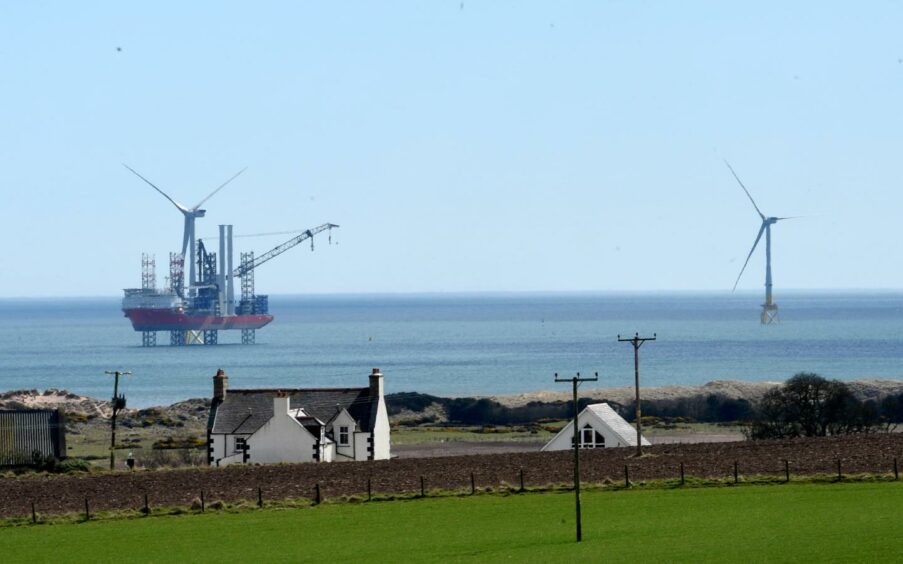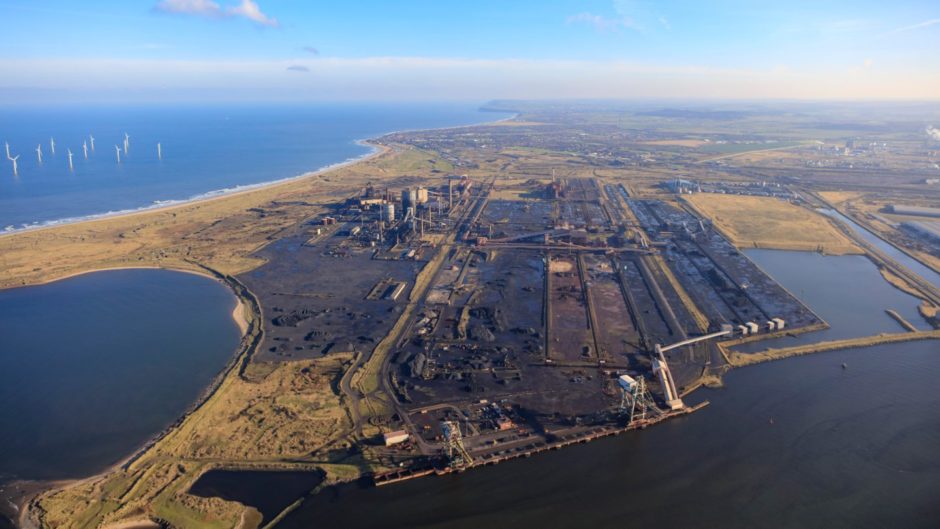
With the UK’s energy security strategy due for publication on Thursday, Energy Voice pulls together the likely outcomes.
The UK Government is set to unveil its long-awaited Energy Security Strategy on Thursday, with new renewables, nuclear and domestic gas “all a crucial part of achieving its aims”, according to Prime Minister Boris Johnson.
It comes as the UK looks to forge a path of greater energy independence amid spiralling energy prices, and a drive to wean the country off Russian oil and gas imports.
All the while, the course must also remain firmly fixed on the country’s 2050 net zero target.
Secretary of State for Business, Energy and Industrial Strategy (BEIS) Kwasi Kwarteng has made it clear that the strategy will see more local energy production, and faster, though full details of the plan are not yet clear.
We're going to generate and produce more energy in Britain.
More wind, more solar, more nuclear, more hydrogen – while maximising North Sea production.
More energy on accelerated timescales.
Our Energy Security Strategy tomorrow is our plan for greater energy independence.
— Kwasi Kwarteng (@KwasiKwarteng) April 6, 2022
Here Energy Voice has pulled together some of the likely outcomes.
North Sea oil and gas
Whatever its contents, all signs point to a strategy that places a renewed importance on North Sea oil and gas.
The North Sea Transition Authority (NSTA), has already confirmed its intention to hold a new North Sea exploration round this year, while other reports have suggested development plan approvals for six key fields could be fast-tracked to spur momentum this year.
A licence extension granted to the controversial Cambo project also suggests it could see a renewed route to final investment decision (FID) as domestic production is prioritised.
Meanwhile in a recent interview Brexit Opportunities Minister Jacob Rees-Mogg batted away calls for a windfall tax, saying that companies should seek to extract “every last drop” from the North Sea.
Other measures to shore up investment may also be announced. A Treasury representative recently noted that the department is already meeting with lenders to encourage them to back North Sea projects.
However, it is clear that any new field developments will be long-term solutions to short-term problems, as projects will still take years to come line.
Trade body Offshore Energies UK (OEUK) recently warned that if there are no fresh exploration and production facilities, by 2030 around 80% of UK gas supplies and more than 70% of oil will have to be sourced from abroad.
There have also been calls to boost the UK’s gas storage capacity, after the closure of the Rough facility left the nation without much seasonal flexibility beyond the spot market.
Nuclear
Mr Johnson is equally keen to bet big on nuclear power.
Last week he told nuclear industry bosses the government intends to source 25% of the UK’s electricity from nuclear power by 2050 – a fivefold increase in capacity – requiring up to six new large-scale plants.
However, reports have suggested Chancellor Rishi Sunak has pushed back on the scale of his ambition, citing poor long-term value and substantial increases in bills for projects that may not be delivered until the mid-2040s.
The Treasury has instead pushed for alternatives that could be built faster and cheaper.
It is disagreement over this element of the strategy that has allegedly delayed its publication.
Offshore wind
Together with nuclear, offshore wind is reportedly Mr Johnson’s other “big bet”.
During a meeting with sector representatives last week, the Prime Minister is said to have called for “a colossal wind farm you can float out into the middle of the Irish Sea”.
The government already has ambitious targets to establish 40 gigawatts (GW) of installed offshore wind capacity by 2030 – from today’s 11GW – with recent news suggesting this may be increased to 50GW as part of the forthcoming strategy.
That will no doubt be buoyed by the recent ScotWind leasing round which saw awards for just shy of 25GW, though few sites are likely to be operational by that date.
The move to yearly Contract for Difference auctions will also enable more projects to bid for capacity in the coming years – together with other forms of renewables.
Onshore wind
After a period on the sidelines, onshore wind could be poised for something of a renaissance.
Since 2015 the technology has largely been excluded from government support, but Mr Kwarteng says people are now “far more open” to new developments.
Onshore wind has long been regarded as one of the more opposed renewable technologies due to its visual impact, particularly in rural areas.
Yet opinions may be changing and research from Copper Consultancy claims there is widespread support for onshore wind among the public, including Conservative voters.
There are claims it is unlikely to be a cornerstone of the strategy though, with scepticism from the government’s top brass holding strong.
Fracking
Much like onshore wind, the fracking of shale gas in the UK has garnered a large amount of public debate and it will probably play a small part in the upcoming white paper.
Some see it is a cheap way to obtain gas, meaning it could bring down the price, while others are concerned about the environmental impact of the process.
A moratorium on shale gas extraction has been in place since November 2019, and earlier in 2022 the North Sea Transition Authority ordered energy firm Cuadrilla to plug and abandon the UK’s only two wells.
But just this week the UK Government has commissioned a review into the geology of fracking in the UK.
Mr Kwarteng said: “We have always been, and always will be, guided by the science on shale gas.”
In response Ami McCarthy, political campaigner for Greenpeace UK, said: “Less than 24 hours after the UN has slated new fossil fuels investments as ‘economic madness’, the government has launched a review into fracking. This does not bode well for Thursday’s upcoming energy strategy.”
Solar
Reports recently emerged in the Financial Times that the energy security whitepaper could include a pledge to drastically ramp up solar deployment.
Mr Kwarteng is expected to announced plans to turbo charge investment in the technology to propel capacity from around 14GW today to 50GW by the end of the decade.
Yaw Ofori, managing director of renewables firm Greentech, welcomed moves to triple the number of solar panels across the UK by 2030 — but said the Government must do more to make it happen.
He said: “There has to be much more to this than simply setting targets and hoping that the renewable industry will deliver on them. The Government must look at national planning policy to ensure that developments such as solar farms are given every opportunity to go ahead.”
As well as large-scale solar farms, there is scope for some people to install them on their homes to help minimise their environmental impact.
And in his recent spring statement Chancellor Rishi Sunak announced that, for the next five years, VAT on residential solar, as well as energy saving materials, would be axed to zero.
Hydrogen
Other reports this week suggest the UK’s current target to establish 5GW of hydrogen production capacity by 2030 will be doubled, with half produced from renewable sources (green), and half from fossil fuels paired with carbon capture (blue).
This will likely to lead to the expansion and acceleration of planned projects, such as BP’s H2 Teesside, but may also require new project approvals and government funding.
Around £240m has already been committed as part of a Net Zero Hydrogen fund, though this pot may increase if the larger targets are to bet met.
A stronger push towards hydrogen may also influence other elements of government strategy, spurring further adoption in other sectors such as transport and heavy industry.
Demand and energy efficiency
While the strategy has focused on energy independence in the context of supply, less mention has been made of reducing demand and promoting energy efficiency.
The Chancellor’s VAT cut on some materials will undoubtedly help, but other measures such as an expansion of a household insulation scheme have already been discounted.
Further policies may announced, but any overlooking of immediate and low-cost opportunities to reduce energy use through consumption is likely to upset campaigners.
The government’s energy relaunch is in disarray. It will not be worth the paper it is written on unless it finally delivers on energy efficiency, the most effective way to cut energy bills, cut our demand for fossil fuels and cut carbon emissions.
— Ed Miliband (@Ed_Miliband) April 6, 2022
As Jonathan Maxwell, CEO and founder investment firm Sustainable Development Capital noted: “Increasing energy efficiency has a huge role to play in cutting carbon and lowering costs, as well as increasing our energy security, but it often gets less attention than it deserves. This must change.”
He said efficiency measures “quickly pay for themselves” in terms of the cost savings they deliver, but that they also go on to enable further savings.
“There is an investment case, an environmental case and a national security case for putting energy efficiency front and centre of the Government’s strategy. We hope these will be reflected in its plans.”
Recommended for you

 © Supplied by DCT Media
© Supplied by DCT Media © Supplied by BP
© Supplied by BP